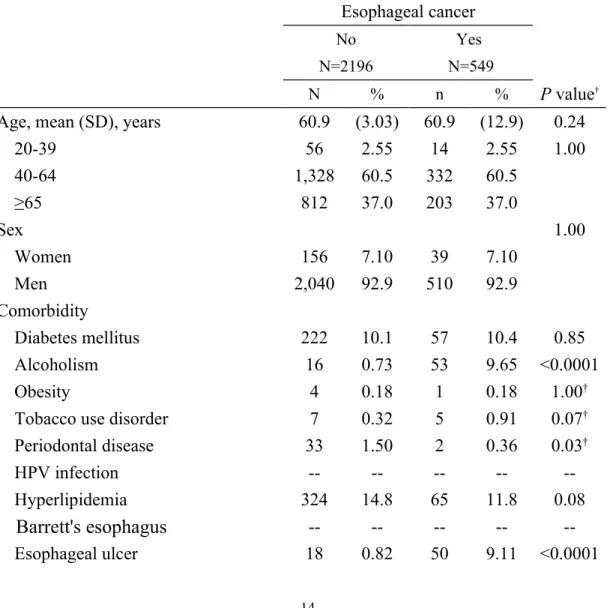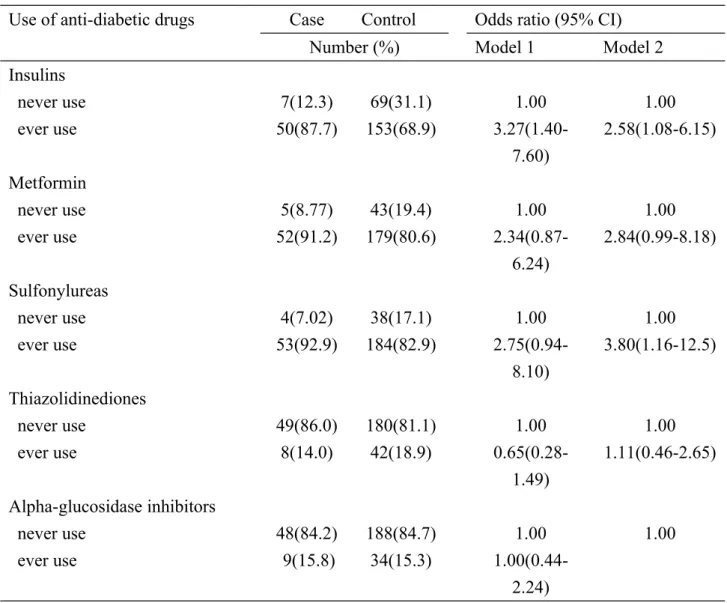Title Page
MS: 1146870325656267
Ref.: New MS number: 6233153637139271
Type of manuscript: Original study
Old Title: Esophagus cancer and diabetes mellitus: A population-based case- control study in Taiwan (Revision 2)
New Title: Risk of esophagus cancer in diabetes mellitus: A population-based case-control study in Taiwan
Running head: Esophagus cancer and diabetes mellitus
Kao-Chi Cheng, MD and MPH
1; Yu-Lung Chen, MD and MPH
1; Shih-Wei Lai, MD
1,2; Pang-Yao Tsai, MSPH
3,4; Fung-Chang Sung, PhD and MPH
3,41
Department of Family Medicine and
3Management Office for Health Data, China Medical University Hospital, Taichung 404, Taiwan
2



